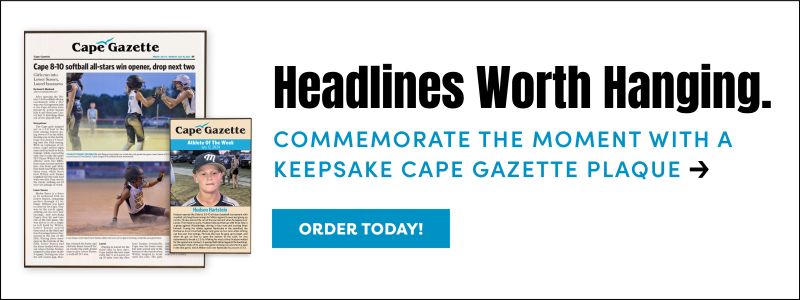Horseshoe crabs must be protected, but not added to endangered list
There is a movement by some conservation groups to make the horseshoe crab an endangered species. This must not happen! No. 1, there are plenty of horseshoe crabs in the wild, and we can do much more to protect the ones we have until they rebuild their stock before they reach the point of being endangered.
Currently, horseshoe crabs are harvested as bait for whelks and to use for medical purposes. There are substitute baits that can be used in whelk traps, so that harvest can be stopped.
As for the horseshoe crab blood that is used in medical vaccine testing, that is taken from live crabs, and the crab is then returned to the water. In recent tests, it has been determined that less blood is needed from each crab, so release mortality should lessen.
Should the horseshoe crab become listed as an endangered species, we would see the closing of beaches from at least Bowers to Lewes, and all of Indian River and Rehoboth bays. Just as the Point at Cape Henlopen State Park is closed all summer because of nesting pipping plovers, so too would all of those beaches be closed all summer due to breeding horseshoe crabs.
It is true, there are nowhere near the number of horseshoe crabs as there once were. I recall when dump trucks and front-end loaders were used to clear the dead and rotting horseshoe crabs from Slaughter Beach. At low tide, the crabs covered the exposed sand bars far out into the bay.
The eggs the crabs lay feed a multitude of species. When we had our camper at Bayshore on Indian River Bay, the horseshoe crabs would come up on the beach at night. I would shine a light on the water and see all sorts of fish, from small dog sharks to blues to trout to minnows, feeding on the eggs.
The red knot is a migrating bird that flies from South America to the Arctic and depends on the horseshoe crab eggs to sustain it on the long journey. From what I understand, the decline in horseshoe crabs has caused a decline in red knots.
As is always the case, man has destroyed the crabs by overharvesting them. The worst of the destruction was done with bottom trawlers out of Virginia. I believe that practice has been stopped.
All harvest of horseshoe crabs, except for medical use, must be stopped right now. These things have been around for a few billion years, so I believe, if given a chance, they can recover, and the red knots will recover right along with them.
Quit complaining
Yes, I know the weather has been horrible and the water temperature in the ocean and bay is stuck in the 40s, but there are other places to fish where you don’t need your big boat, heavy tackle or to bear the cost for a day’s fishing. That’s right – go fishing in freshwater.
One of the best locations to fish at any time of year is the local spillway. These places are at the head of tidal creeks and rivers where all sorts of fish show up during the year. You may find sunfish, striped bass, herring, shad, pickerel, white perch, largemouth bass, yellow perch, catfish and eels.
I grew up fishing the spillway in Laurel when my grandparents would drop me off there while they visited their friends in town. I caught all of the fish listed above on a variety of baits and lures.
In the spring, it was shad and herring. I used two shad darts tied about 8 to 10 inches apart. Sometimes I would catch two herring at a time. When I caught an American shad, or as we called them, white shad, that was exciting. They would jump like little tarpon.
Right now, folks are catching white perch at the spillway in Milton. Unlike the spillway in Laurel when I fished there, the Milton spillway has a nice fishing pier. Laurel also has a pier now, but it didn’t have one in the 1950s. The banks of Milton Memorial Park are other good access points for some freshwater fishing.
While I have not fished Millsboro Pond, I am told by reliable sources that it holds lots of pickerel. You will need a small boat or kayak to access this body of water, but the state recently constructed a boat ramp and parking area at the pond.
My reliable source is a fly fisherman, and if you can catch pickerel on a fly, they must be thick. I would use a live minnow, a small spoon or a plug that imitates a minnow. Work it slow, since the water is cold.
Good luck!

























































